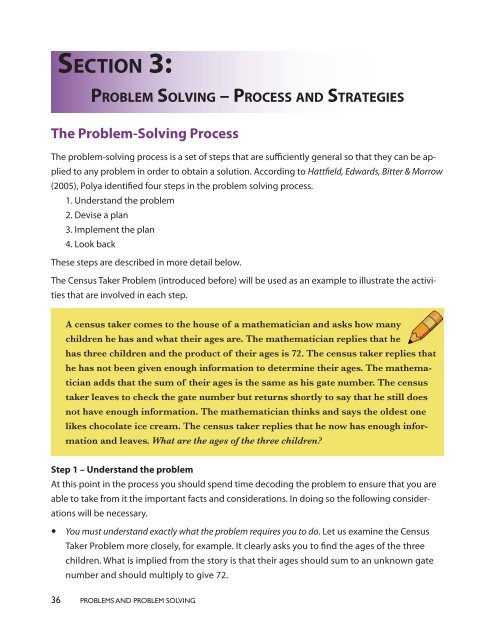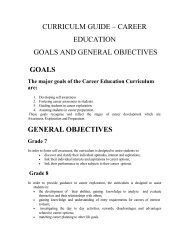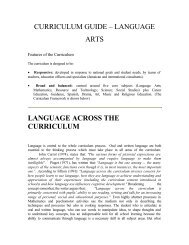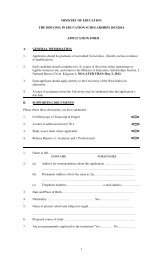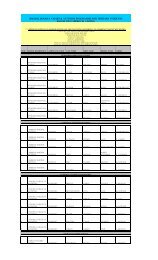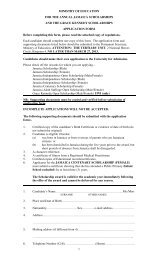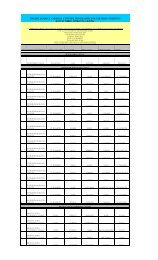Problems and Problem Solving - Ministry of Education
Problems and Problem Solving - Ministry of Education
Problems and Problem Solving - Ministry of Education
Create successful ePaper yourself
Turn your PDF publications into a flip-book with our unique Google optimized e-Paper software.
se c t I o n 3:<br />
pr o B l e m so l V I n g – pr o c e s s A n d st rA t e g I e s<br />
The <strong>Problem</strong>-<strong>Solving</strong> Process<br />
The problem-solving process is a set <strong>of</strong> steps that are sufficiently general so that they can be applied<br />
to any problem in order to obtain a solution. According to Hattfield, Edwards, Bitter & Morrow<br />
(2005), Polya identified four steps in the problem solving process.<br />
1. Underst<strong>and</strong> the problem<br />
2. Devise a plan<br />
3. Implement the plan<br />
4. Look back<br />
These steps are described in more detail below.<br />
The Census Taker <strong>Problem</strong> (introduced before) will be used as an example to illustrate the activities<br />
that are involved in each step.<br />
A census taker comes to the house <strong>of</strong> a mathematician <strong>and</strong> asks how many<br />
children he has <strong>and</strong> what their ages are. The mathematician replies that he<br />
has three children <strong>and</strong> the product <strong>of</strong> their ages is 72. The census taker replies that<br />
he has not been given enough information to determine their ages. The mathematician<br />
adds that the sum <strong>of</strong> their ages is the same as his gate number. The census<br />
taker leaves to check the gate number but returns shortly to say that he still does<br />
not have enough information. The mathematician thinks <strong>and</strong> says the oldest one<br />
likes chocolate ice cream. The census taker replies that he now has enough information<br />
<strong>and</strong> leaves. What are the ages <strong>of</strong> the three children?<br />
Step 1 – underst<strong>and</strong> the problem<br />
At this point in the process you should spend time decoding the problem to ensure that you are<br />
able to take from it the important facts <strong>and</strong> considerations. In doing so the following considerations<br />
will be necessary.<br />
• y You must underst<strong>and</strong> exactly what the problem requires you to do. Let us examine the Census<br />
Taker <strong>Problem</strong> more closely, for example. It clearly asks you to find the ages <strong>of</strong> the three<br />
children. What is implied from the story is that their ages should sum to an unknown gate<br />
number <strong>and</strong> should multiply to give 72.<br />
36 PROBLEMS AND PROBLEM SOLVING<br />
<strong>Problem</strong><strong>Solving</strong>.indd 36<br />
8/24/12 6:55:52 PM


